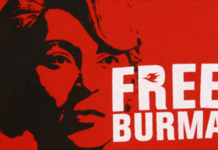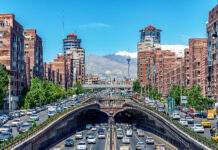by Alessandro De Pascale
After a massive air bombing campaign and a rain of artillery fire, the Israel Defense Forces (IDF) of the Jewish state launched substantial and rapid ground operations, crossing the border with their tanks into the border village of Wazzani, as shown by satellite images released by the pan-Arab TV network al-Jazeera. This all took place in what was supposed to be a demilitarized buffer zone protected by its ‘blue helmets,’ between the Lebanese area controlled by Hezbollah and Israel.
For this purpose, on March 17, 1978, the UN Security Council established the United Nations Interim Force in Lebanon (UNIFIL), following a series of resolutions passed in that forum, starting with resolutions 425 and 426. Today, this mission includes 1,200 Italian soldiers serving as blue helmets on behalf of the United Nations. The presence of Israeli tanks around their base was confirmed yesterday by UNIFIL spokesman Andrea Tenenti on Italian public broadcaster RAI. This occurred on the same day that a RAI crew was attacked in Lebanon: difficult moments for the experienced journalist Lucia Goracci and her cameraman, while the driver, a long-time RAI collaborator, suffered a fatal heart attack.
The UNIFIL peacekeeping mission felt the winds of war from the latest escalation of this conflict, which has been ongoing for over half a century, starting a week ago. The sounds of Israeli artillery began to be heard in Naqoura. In the following days, the Israel Defense Forces (IDF) began unleashing a rain of fire on Lebanon: approximately 73 tons of bombs dropped only on the night of October 3 on the Dahieh suburb of the Lebanese capital Beirut, a stronghold of Hezbollah, targeting the bunker where Hashem Safieddine, a cousin of Hassan Nasrallah and his likely successor, was hiding. Two other potential key interlocutors of that political movement, who could have negotiated an end to hostilities, were assassinated like many others before them, through extrajudicial killings by the State of Israel, which describes itself as ‘the only democracy in the Middle East.’
During those hours, in addition to the carpet bombing by the Israeli air force (with fighter jets and drones), the Israel Defense Forces (IDF) were also launching artillery shells from their border into Lebanon using special underground bunkers built over the years in what should be the buffer zone that UNIFIL has been supposed to demilitarize in its 45 years of existence, funding, and military personnel provision—currently supplied to the UN by 46 nations. The Italian government, currently led by Giorgia Meloni, publicly acknowledged the failure of this mission last Friday.
This ineffectiveness is further underscored by Israel’s construction of the aforementioned bunkers over the years to launch missiles and the passage of arms destined for Hezbollah. All of this occurred under the powerless gaze of UNIFIL blue helmets, whose hands were tied by the stringent rules of engagement of that and many other UN peacekeeping missions. In July 1995, during the Balkan War, the genocide of approximately 8,000 Bosniak Muslim men took place in the city of Srebrenica, perpetrated by the troops of the Army of the Republika Srpska led by General Ratko Mladić. This happened in full view of 600 UN blue helmets from the three Dutchbat companies I, II, and III, part of the UNPROFOR peacekeeping mission. They did not intervene and retreated to their base, witnessing the massacre while also being protected by their rules of engagement.
Returning to the present, on the night of last Thursday, after wearing bulletproof vests and helmets for days, suspending patrols, and remaining confined to their bases without lookout posts, the Italian blue helmets had to finally take refuge underground: ‘The war has never been so close to us,’ they informed the Defense Ministry in Rome, ‘we hear the bombings and are staying inside the bunkers.’ Meanwhile, families were flooding the phone lines. The head of that ministry, Guido Crosetto, after a quick morning hearing before the relevant parliamentary committees, rushed to meet with Prime Minister Meloni, bringing the issue to that afternoon’s Council of Ministers. In the meantime, at bases 1-31 and 1-32 Alpha, where the Sassari Brigade of UNIFIL operates, the highest alert level was activated, fluctuating between levels 2 and 3. Outside, the war raged on.
On the cover photo, Kfarkila, Lebanon (December 27, 2018), United Nation peacekeeping force UNIFIL ©paul saad/Shutterstock.com
























